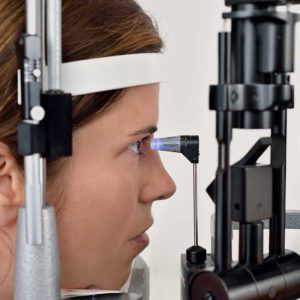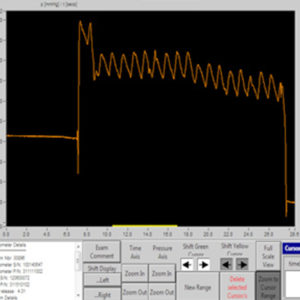Tonometry
The measurement of intraocular pressure is called tonometry. The pressure inside the eyeball in healthy adults is between 10 and 21 millimeters of mercury (mm Hg).
Increased intraocular pressure leads to damage of the nerve fibers and can thus permanently damage the optic nerve. Since this happens gradually and almost always painlessly, preventative measurement of intraocular pressure from the age of 45 onwards, or even earlier if the family is affected, is important for early detection.

CONTACT TONOMETRY
The most common method is the measurement with the Goldmann applanation tonometer. Before the examination, the cornea is anaesthetized with eye drops so that the examination can be performed painlessly. Afterwards, a small measuring body (sensor) flattens the curvature of the cornea in an area of about three millimeters. The pressure required for this flattening corresponds to the intraocular pressure and is read by the doctor.

PASCAL TONOMETER
The cornea is also anaesthetized with eye drops for this examination. However, the measuring body is constructed in such a way that the cornea is practically not flattened, so that the measurement can be performed independently of the corneal thickness. A small built-in sensor (piezoelectric element) determines the eye pressure 100 times per second.

The sensitivity of the device can record the fluctuations in eye pressure caused by the heartbeat. In addition to the precise measurement of the intraocular pressure, the ocular pressure amplitude can thus be determined. This provides additional information about the blood supply to the optic nerve.

